Education Art, Music, Lyrics & Poetry
ART
Art is an ancient means of education. From the cave drawing in France to the American Indian petroglyphs found in the Southwestern United States art has been used as an expression of information and learning. Art has also been used as a form of expression and healing. In education art is used to foster creativity and bridge learning gaps. Graphic recordings are an artistic form of note taking during education lectures. Art interaction with education not only benefits spacial learners but also increases attention spans in developing adolescence.
MUSIC
Music learning in education is a growing field. In grammar school students music and poetry have long been used to educate. They rhythm of the music and the rhyming of the lyrics break down resistance to the subject matter and draw the student in. Just like songs that a person heard many years ago so can educational songs remain in a person’s subconscious only to “pop-up” later in life and re-educated.
Listening to music while studying, helps “block out the white noise” for some students but it doesn’t work for everyone. Some find music too distracting to study with while others love it. If a student lives in a noisy house or needs to study in a noisy public place listening to music on headphones or earbuds can help, “find the student’s own space” to study. The choice of music is important too. Head-banger music probably isn’t a good choice of music to study to but learning is the objective and if it works it works. We know most K-12 students aren’t into classical music but listening to the classics while studying can have the dual effect of creating an appreciation of some great music while at the same time learning the course information.
The following are two examples of how music is now being used in education.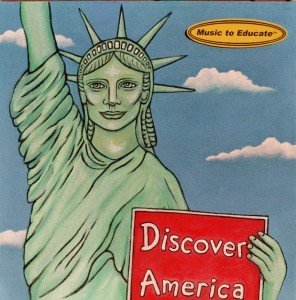
Music 2 Educate is an educational record label created by singer/songwriter Janine Cooper Ayres. After many years of playing and performing in several rock bands she teamed up with friend and co-writer Lonnie Martinez to form “The Sunshine Sisters” (good music for good kids). It was during that time that Janine discovered she enjoys writing songs that help students learn as they sing along. She has crated four albums targeted at grammar school students.
“Discover America” – These songs will make learning about American History easy and fun. With modern upbeat rhythms, using styles like rap, pop and country, students of all ages can sing along as they learn about the States and Capitals, American facts and much more. The music is good and full on educational information with very speedy delivery.
“Sing the Sonnets” – The lyrics of all eleven songs on were written over four hundred years ago by William Shakespeare. Composer/producer, Janine Cooper Ayres has spent over ten years on this project, putting Shakespeare’s lyrics to music, utilizing such modern styles as rap, pop, folk and country. This CD is a great tool for students of literature and history or for anyone interested in the origins of poetry.
“Remember the Presidents” – “Remember the Presidents” is an educational CD designed to help students of all ages learn about the Presidents of the United States. It is updated 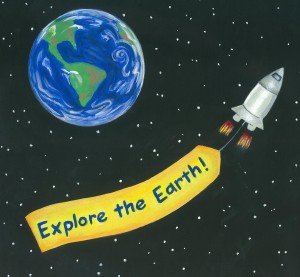 with our current President, Barack Obama. This CD will teach the listener a lot about all of the presidents.
with our current President, Barack Obama. This CD will teach the listener a lot about all of the presidents.
“Explore The Earth” – is a great tool to help students of all ages learn more about the planet we live on. The songs are easy to sing along to and have a folksy – pop feel. There are also a few ‘green’ songs to encourage us all to respect the Earth. Songs include “Drivin’ My Hybrid,” “Earth’s Elements,” “Happy Earth Day!,” “Amazing Animals,” “Recycle – Ride a Bicycle,” “Oceans,” “Get Off the Grid, and “We’re All in This Together.” Genre: Kids/Family: Educational Earth Facts.
LYRICS
In the article below “A Hip-Hop Experiment” two completely divergent concepts are combined to facilitate cognitive development. Learning 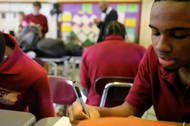 science through Hip-Hop is used and could be more effective than traditional science instruction, in which teachers stand in front of classes delivering information, then judge students by their ability to repeat it on tests. “Kids relate best when they’re standing up,” said Dr. Emdin. “The teacher can measure engagement by the hand gestures and head bobs. And when the last kid couldn’t finish his verse, everybody gave him encouragement. In a traditional school, he’d have failed. We need to expand the notion of what success.
science through Hip-Hop is used and could be more effective than traditional science instruction, in which teachers stand in front of classes delivering information, then judge students by their ability to repeat it on tests. “Kids relate best when they’re standing up,” said Dr. Emdin. “The teacher can measure engagement by the hand gestures and head bobs. And when the last kid couldn’t finish his verse, everybody gave him encouragement. In a traditional school, he’d have failed. We need to expand the notion of what success.
POETRY
The Common Core requires the need to raise the level of rigor in student reading materials and how they have to process those materials. CCSS.ELA-Literacy.RL.4.2 requires the determination of a theme of a story, drama, or poem from details in the text and summarize the text and CCSS.ELA-Literacy.RL.4.5 requires an explanation of the major differences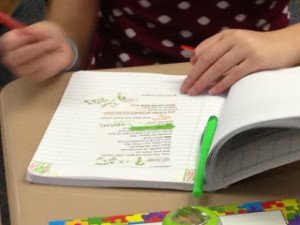 between poems, drama, and prose, that refer to the structural elements of poems (e.g., verse, rhythm, meter) and drama (e.g., casts of characters, settings, descriptions, dialogue, stage directions) when writing or speaking about a text.
between poems, drama, and prose, that refer to the structural elements of poems (e.g., verse, rhythm, meter) and drama (e.g., casts of characters, settings, descriptions, dialogue, stage directions) when writing or speaking about a text.
All i.pel integrated digital curriculum will contain a feature which will allow students to convert text to poetry. This feature will allow students to use critical thinking in a creative and fun application. Higher level skills are often best tackled with short text as in articles, short stories, picture books–and poems! Most students have had a fair amount of exposure to poetry for fun. The goal of this activity is to get students really engaged in some deeper, more thought-provoking thought as required by some of the higher level elements of the Common Core.
Listening to the ideas of others can help clarify a student’s own ideas and can trigger new ideas as well. This is the type of poetry that will force readers to make meaning.

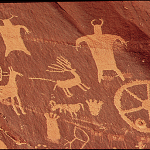
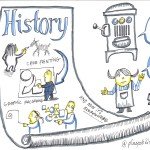

Recent Comments